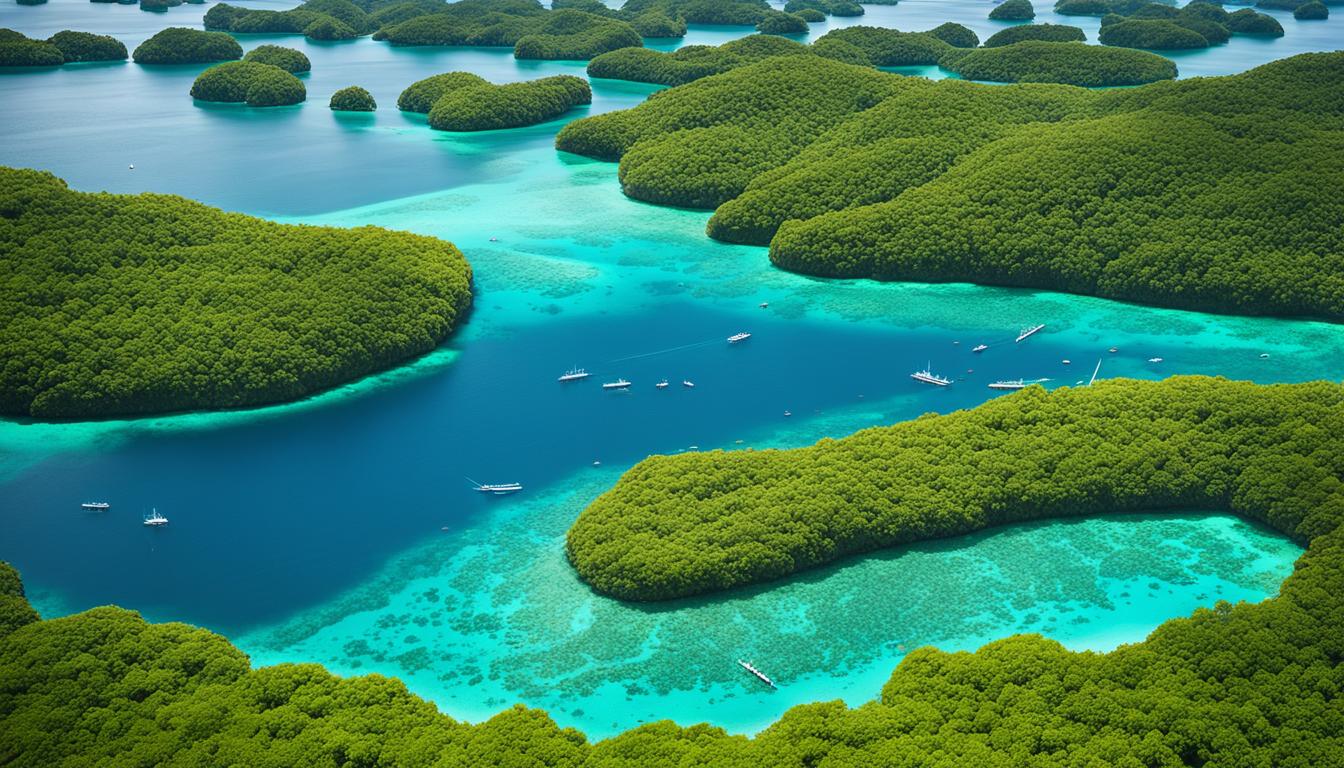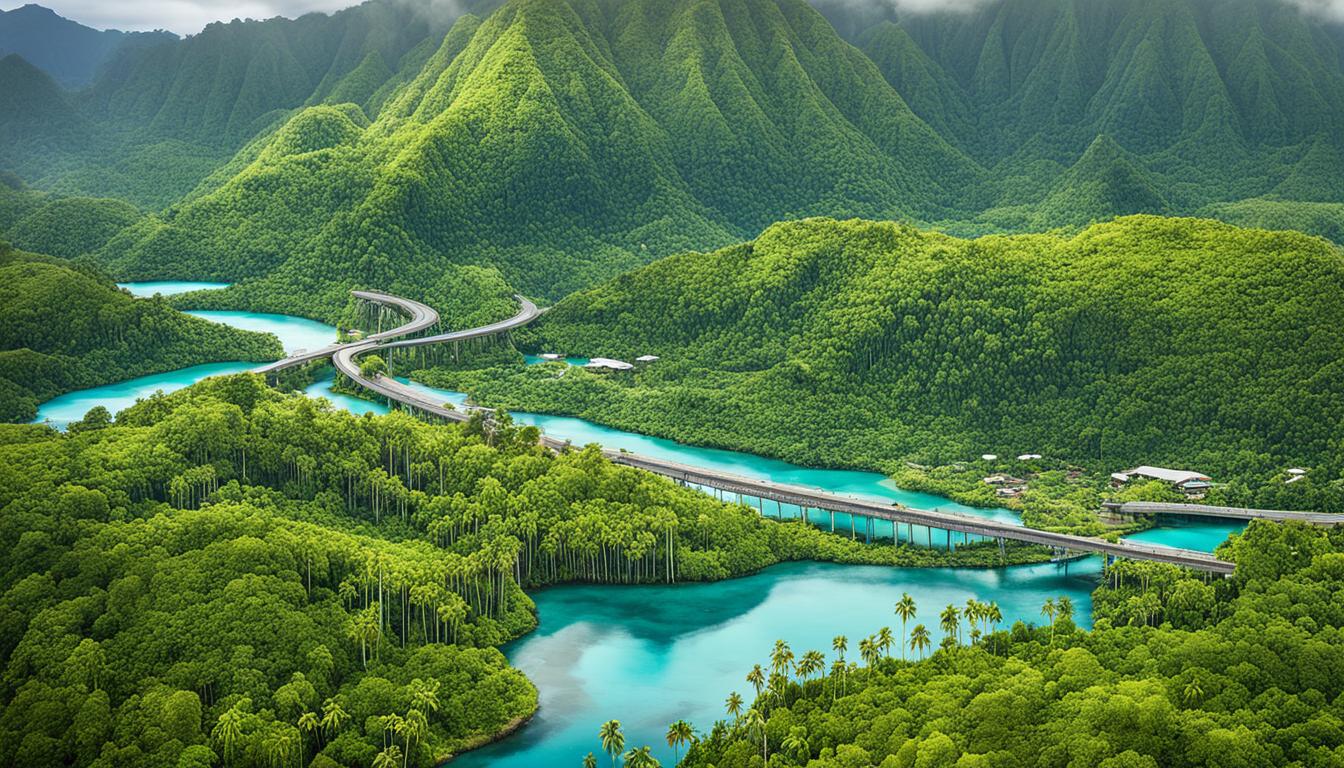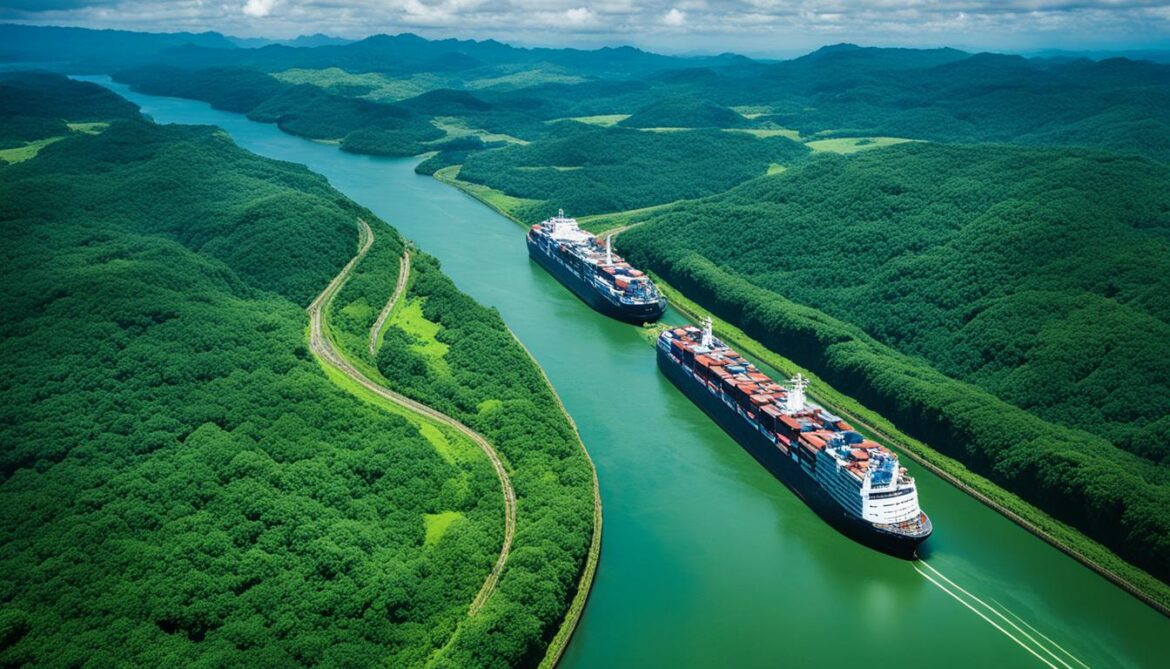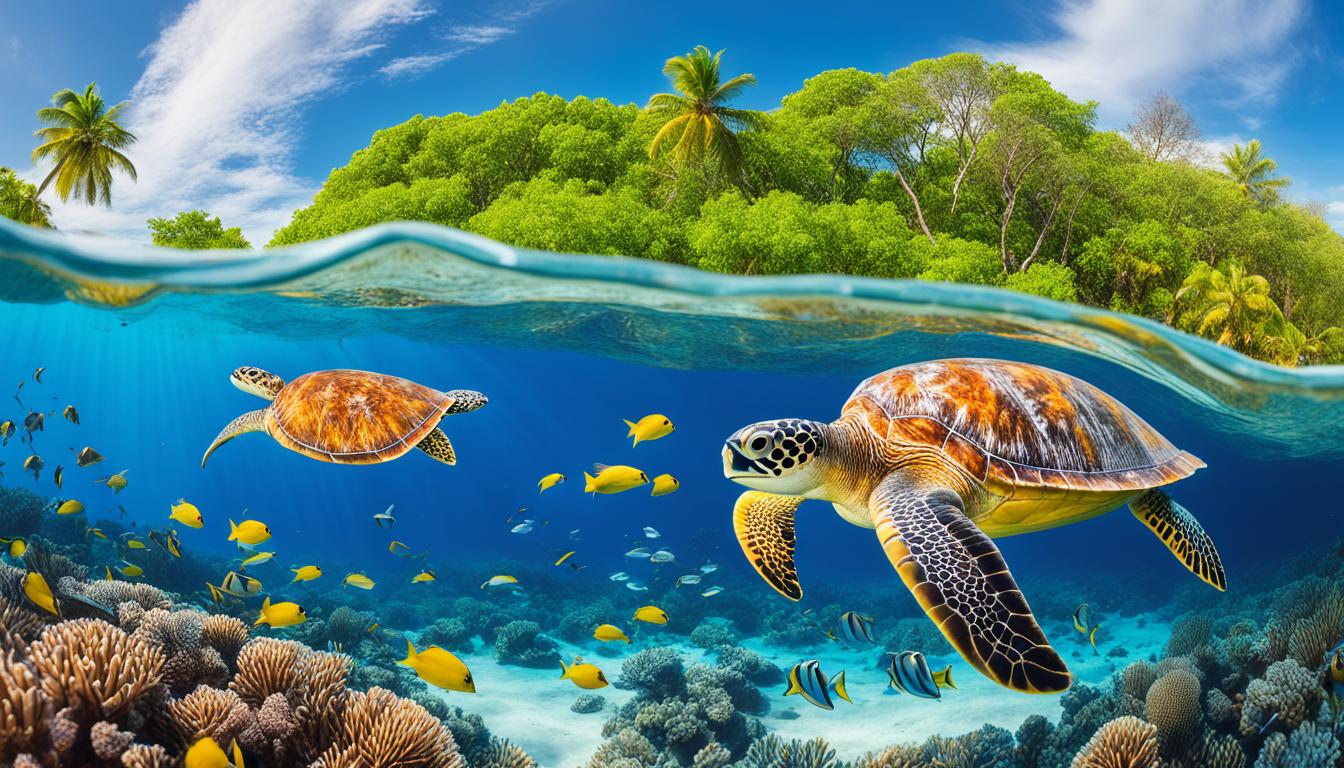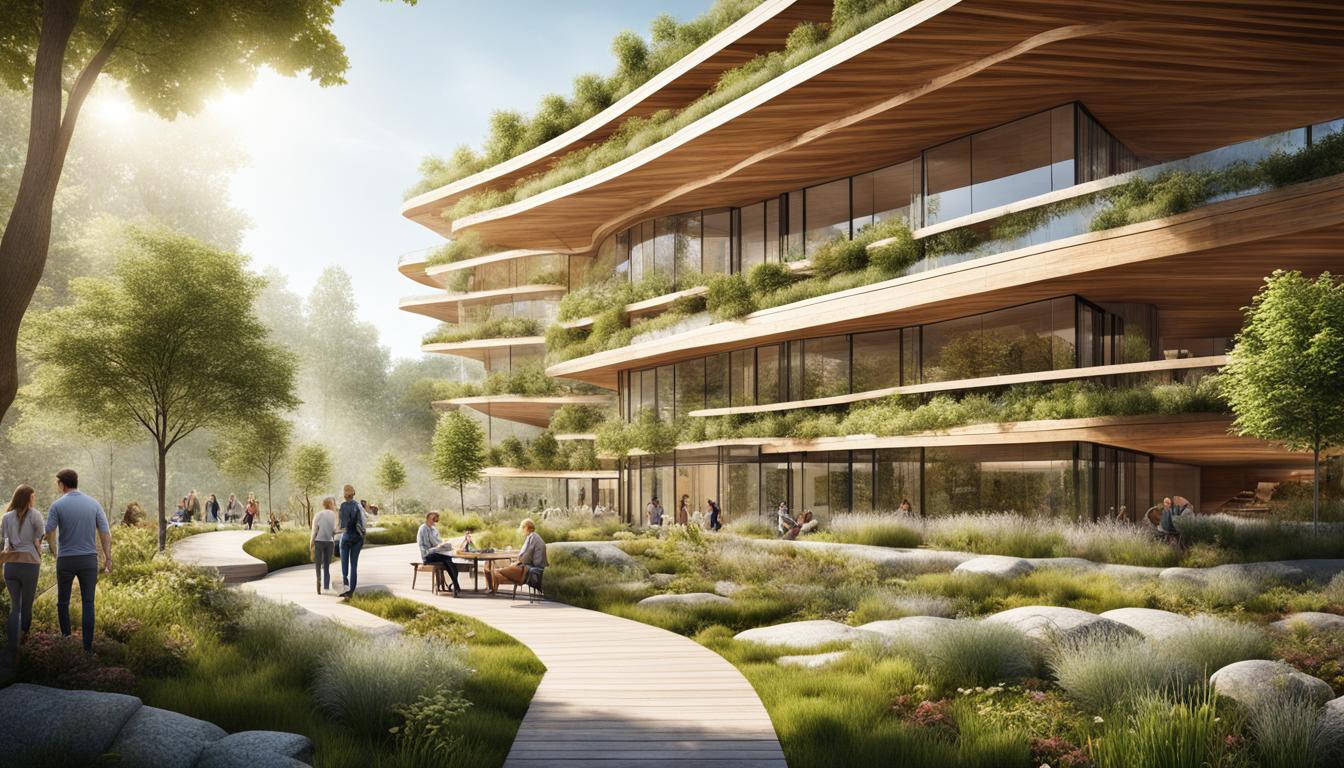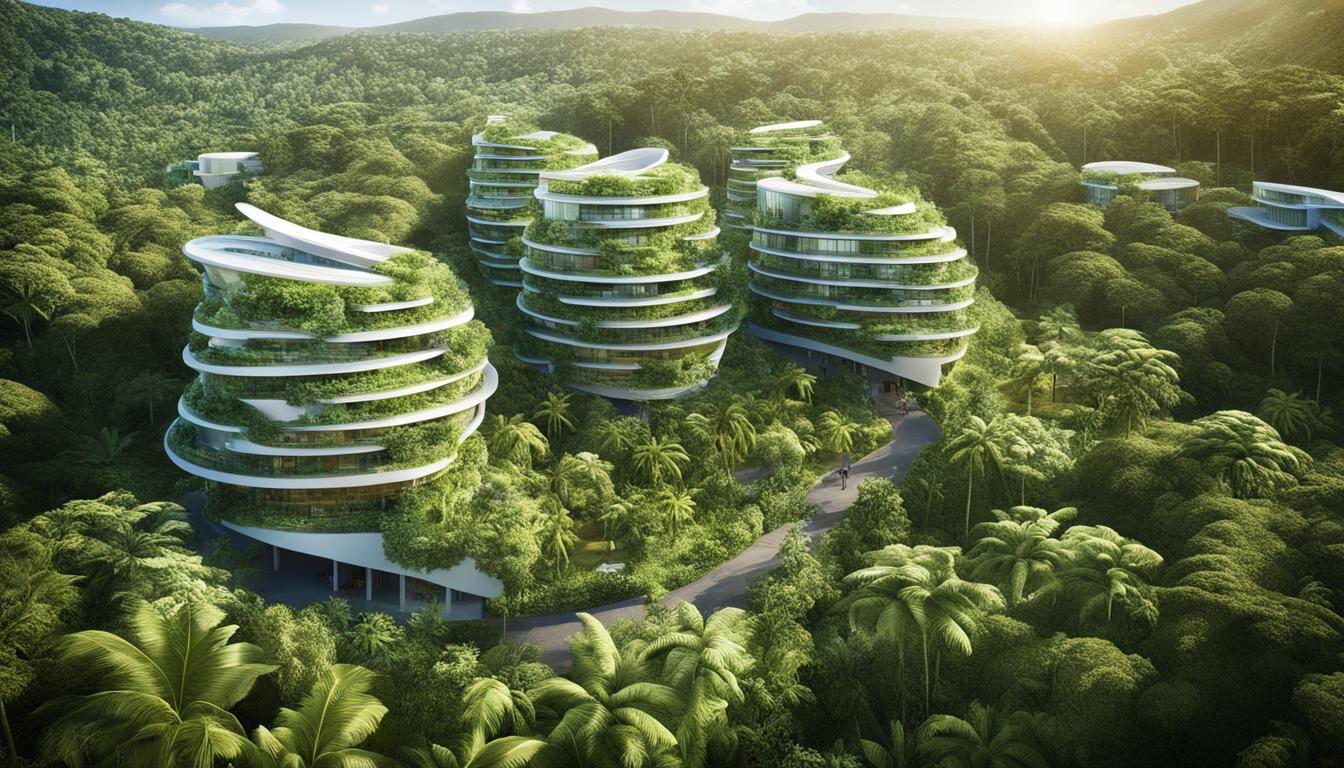Panama Biodiversity and the Built Environment
Did you know that Panama is considered a global hotspot for biodiversity? With its diverse range of tropical ecosystems and vibrant flora and fauna, this small country in Central America is home to an astonishing variety of plant and animal species. However, Panama’s biodiversity is facing numerous threats due to habitat loss, climate change, and illegal wildlife trade. In this article, we will delve into the importance of Panama’s biodiversity, the challenges it faces, and the efforts being made towards conservation and sustainable development.
Key Takeaways:
- Panama is renowned for its rich biodiversity and eco-friendly architecture that promotes sustainable living.
- The country serves as a crucial biological corridor, connecting North and South America and facilitating the exchange of plant and animal species.
- Panama boasts a remarkable diversity of plant species, including over 10,000 types of plants and 1,200 varieties of orchids.
- It is home to a diverse array of wildlife, including jaguars, sea turtles, and poison dart frogs.
- Conservation efforts in Panama focus on protecting habitats, implementing educational programs, and engaging local communities.
The Importance of Panama in the Region
Panama plays a vital role in the region as a biological corridor, connecting North and South America. This unique position allows for the exchange of plants and animals between the continents, facilitating genetic diversity and supporting the survival of various species.
With its diverse habitats, including rainforests, mangroves, and cloud forests, Panama provides a rich environment for scientific research and exploration. The country’s biodiversity is a treasure trove for researchers, particularly in the field of medicinal research.
The protection of Panama’s natural resources is crucial for maintaining the genetic exchange and movement of species throughout the Americas, benefiting both local and global ecosystems. By preserving the delicate balance of Panama’s biodiversity, we not only ensure the survival of diverse plant and animal species but also contribute to the overall health and resilience of our planet.
Biodiversity in Panama: Plants and Trees
Panama is home to a remarkable diversity of plant species. With over 10,000 recorded types of plants, including 1,200 varieties of orchids, 678 species of ferns, and 1,500 different tree species, the country boasts incredible plant diversity. These plants thrive in lush rainforests, mangroves, and cloud forests, contributing to the vibrant ecosystem and providing habitat for numerous animal species. The preservation of these habitats is essential for maintaining the rich plant diversity of Panama, which also plays a critical role in supporting ecosystem services such as oxygen production and carbon sequestration.
In the rainforests of Panama, a plethora of plant species can be found, ranging from towering trees to delicate orchids. The diverse range of orchids in Panama is a testament to the country’s rich plant diversity. With 1,200 different orchid varieties, Panama is a haven for orchid enthusiasts and researchers alike. These beautiful flowers, known for their vibrant colors and unique shapes, contribute to the visual allure of Panama’s tropical landscapes.
Ferns, another group of plants that thrives in Panama, add a touch of elegance to the country’s forests. With 678 recorded fern species, Panama boasts one of the highest fern species counts in the world. These ancient plants, known for their delicate fronds and ability to thrive in shaded areas, play a crucial role in maintaining the balance of Panama’s ecosystems.
Tree species are abundant in Panama, with over 1,500 recorded varieties. These trees provide essential habitat and food sources for a diverse range of animal species, from monkeys swinging between branches to colorful birds perched on their canopies. The tree species diversity in Panama’s forests contributes to the overall ecological resilience and supports the intricate web of life in the country.
The preservation of Panama’s plant diversity is not only important for the aesthetic value it provides but also for the ecosystem services it offers. Trees and plants play a critical role in oxygen production through the process of photosynthesis, contributing to clean and breathable air. Additionally, the dense vegetation in Panama’s forests acts as a carbon sink, helping to mitigate climate change by sequestering carbon dioxide from the atmosphere.
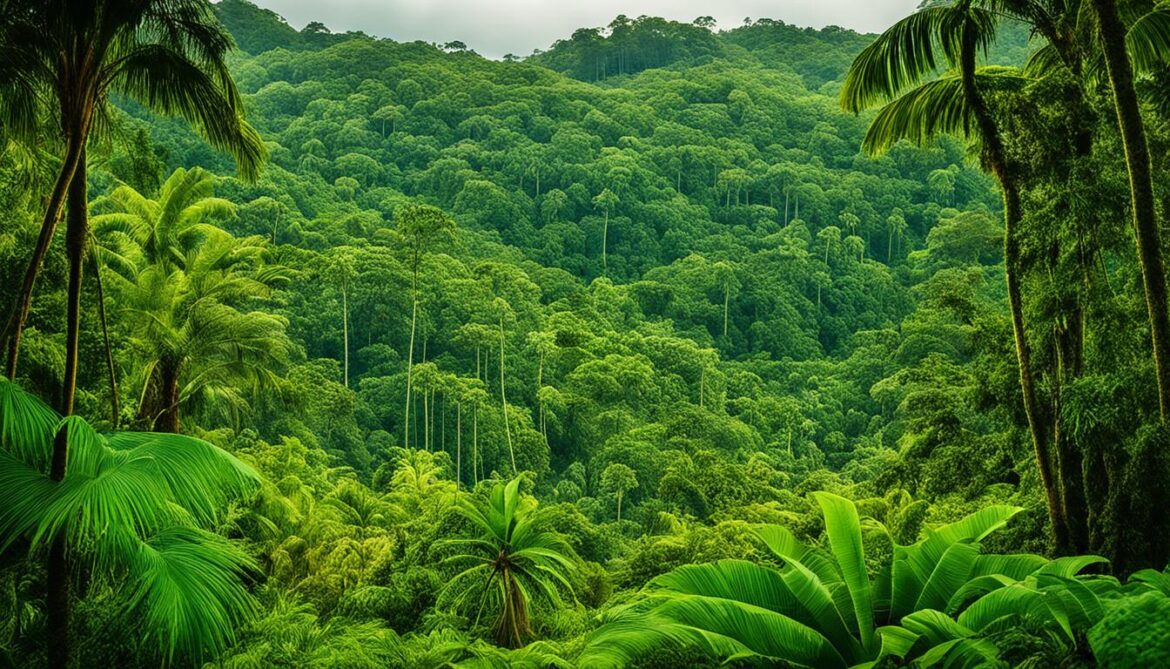
Diverse Wildlife in Panama
Panama is home to a diverse array of wildlife, including 255 mammal species, 972 bird species, and 222 amphibian species. This rich biodiversity includes iconic animals such as jaguars, sea turtles, and poison dart frogs. These incredible creatures are a testament to the ecological abundance found in Panama and the importance of preserving their habitats.
Mammal Species
Panama is home to a variety of mammal species, ranging from small bats to large predators. Some notable examples include the critically endangered pygmy three-toed sloth, the elusive jaguar, and the fascinating golden frog. However, many mammal species in Panama are facing threats due to habitat loss and fragmentation caused by deforestation and urban development.
Bird Species
The bird species in Panama exhibit incredible diversity, with numerous tropical and migratory species found in the country. From colorful toucans to migratory warblers, Panama’s avian population is a birdwatcher’s paradise. However, the loss of forest habitats and the effects of climate change pose significant challenges to bird populations, endangering their survival and migratory patterns.
Amphibian Species
Panama is known as one of the world’s amphibian hotspots, with numerous species of frogs, toads, and salamanders inhabiting its forests and wetlands. The dazzling poison dart frogs are particularly famous for their vibrant colors and toxic secretions. Unfortunately, amphibians worldwide are experiencing population decline due to habitat loss, pollution, and the deadly chytrid fungus.
“Panama’s wildlife is a testament to the incredible biodiversity found in the region. It is crucial that we take immediate action to protect these species and their habitats to ensure their survival for future generations.”
The Impact of Habitat Loss
Habitat loss is one of the greatest threats to Panama’s diverse wildlife. The destruction and fragmentation of forests due to deforestation, urban development, and agricultural activities endanger the survival of many species. Without suitable habitats, wildlife populations decline, leading to imbalances in ecosystems and the potential extinction of endangered species.
Conservation Efforts
Recognizing the importance of protecting Panama’s wildlife, various organizations and government initiatives are working towards conservation efforts. These include:
- Establishment and expansion of protected areas and national parks to safeguard critical habitats.
- Implementation of monitoring programs to track population trends, migration patterns, and the impact of conservation measures.
- Collaboration with local communities to raise awareness about wildlife conservation and promote sustainable practices.
- The enforcement of laws and regulations to combat illegal wildlife trade and poaching.
- Scientific research and initiatives aimed at understanding and mitigating the impacts of habitat loss.
Through these collective efforts, it is hoped that Panama’s diverse wildlife will be protected and conserved for future generations to enjoy.
Endangered Wildlife in Panama
| Species | Status | Main Threats |
|---|---|---|
| Jaguar (Panthera onca) | Critically Endangered | Habitat loss, poaching |
| Pygmy Three-toed Sloth (Bradypus pygmaeus) | Critically Endangered | Habitat loss, climate change |
| Harpy Eagle (Harpia harpyja) | Near Threatened | Habitat loss, deforestation |
| Panamanian Golden Frog (Atelopus zeteki) | Critically Endangered | Chytrid fungus, habitat loss |
| Great Green Macaw (Ara ambiguus) | Endangered | Habitat loss, illegal pet trade |
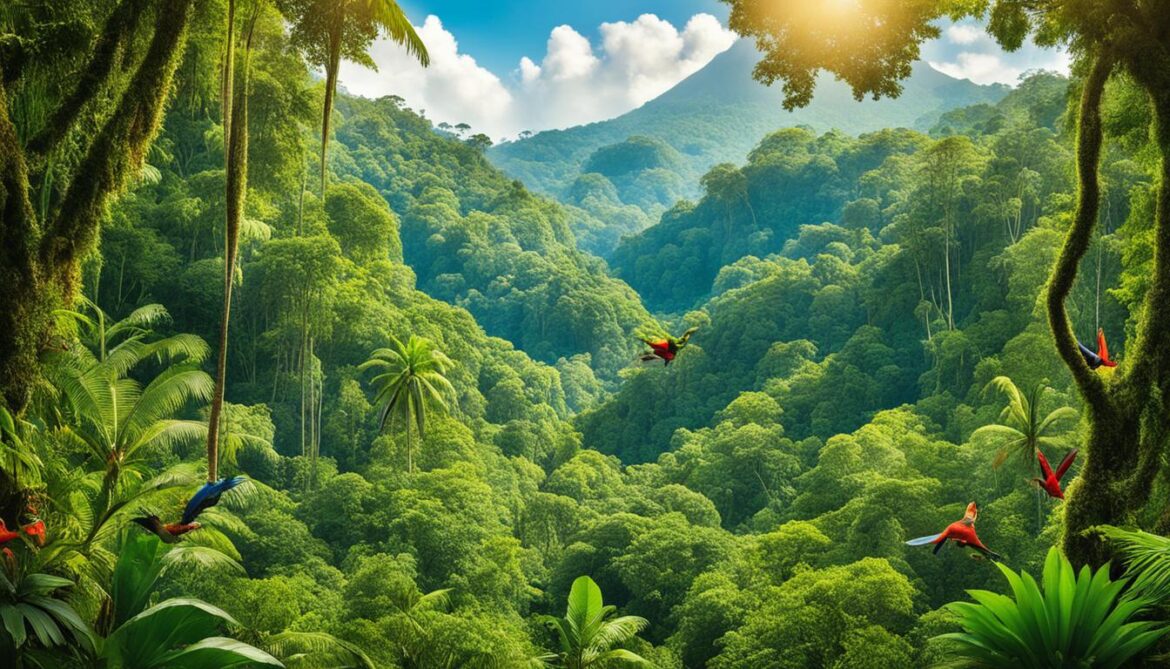
Conservation Initiatives in Panama
Various conservation efforts are underway in Panama to protect its rich biodiversity and promote sustainable development. Local and international organizations have formed partnerships to implement conservation projects focused on education, amphibian conservation, sea turtle conservation, jaguar conservation, wildlife surveillance, and sustainable eco-tourism. These initiatives aim to raise awareness about biodiversity, engage local communities, protect specific species and habitats, and generate economic benefits through sustainable tourism practices. Through collaboration and education, Panama is actively working towards the preservation of its unique natural heritage.
Education for Biodiversity Conservation
An essential aspect of Panama’s conservation efforts is education. Local organizations and schools conduct educational programs to raise awareness about the importance of biodiversity and conservation. Students are taught about the diverse ecosystems in Panama and the significant role they play in supporting plant and animal life. By promoting environmental literacy, Panama aims to cultivate a generation of conservation-minded individuals who will actively contribute to protecting the country’s natural resources.
Amphibian Conservation
Panama is recognized as a global hotspot for amphibian diversity, with over 200 species inhabiting its diverse ecosystems. However, amphibians face numerous threats such as habitat loss, climate change, and the fungal disease chytridiomycosis. Conservation efforts focus on monitoring and protecting critical habitats, implementing captive breeding programs for endangered species, and raising awareness about the importance of amphibians in maintaining healthy ecosystems. By addressing these threats, Panama aims to safeguard its unique amphibian species for future generations.
Sea Turtle Conservation
Panama’s coastline is a crucial nesting ground for several sea turtle species, including the critically endangered hawksbill and leatherback turtles. Conservation initiatives aim to protect nesting sites, implement sustainable fishing practices, and raise awareness about the importance of sea turtle conservation. Local communities are actively involved in sea turtle monitoring and protection, contributing to the long-term survival of these vulnerable species. By supporting sea turtle conservation, Panama is actively contributing to global efforts to protect marine biodiversity.
Jaguar Conservation
The jaguar, an iconic symbol of Panama’s wildlife, is listed as Near Threatened by the IUCN. Conservation initiatives focus on preserving vital jaguar habitats, mitigating human-jaguar conflicts, and implementing anti-poaching measures. Panthera, a leading wild cat conservation organization, works in partnership with local communities and organizations to monitor and protect jaguars in Panama. By safeguarding jaguar populations, Panama aims to maintain the ecological balance and preserve the rich biodiversity of its forests.
Eco-Tourism and Biodiversity Conservation
Eco-tourism plays a significant role in biodiversity conservation in Panama. By promoting sustainable tourism practices, such as nature-based tourism and responsible wildlife viewing, Panama generates economic benefits that support conservation initiatives and local communities. Eco-tourism encourages visitors to appreciate and respect the natural environment, fostering a sense of stewardship for the country’s biodiversity. Through eco-tourism, Panama aims to strike a balance between economic development and the preservation of its unique natural heritage.
| Conservation Initiatives | Description |
|---|---|
| Education | Raising awareness about biodiversity and conservation through educational programs in schools and communities |
| Amphibian Conservation | Monitoring and protecting critical habitats, implementing captive breeding programs, and raising awareness about the importance of amphibians |
| Sea Turtle Conservation | Protecting nesting sites, implementing sustainable fishing practices, and engaging local communities in sea turtle monitoring |
| Jaguar Conservation | Preserving jaguar habitats, mitigating human-jaguar conflicts, and implementing anti-poaching measures in partnership with local communities |
| Eco-Tourism | Promoting sustainable tourism practices that support conservation efforts and local communities |
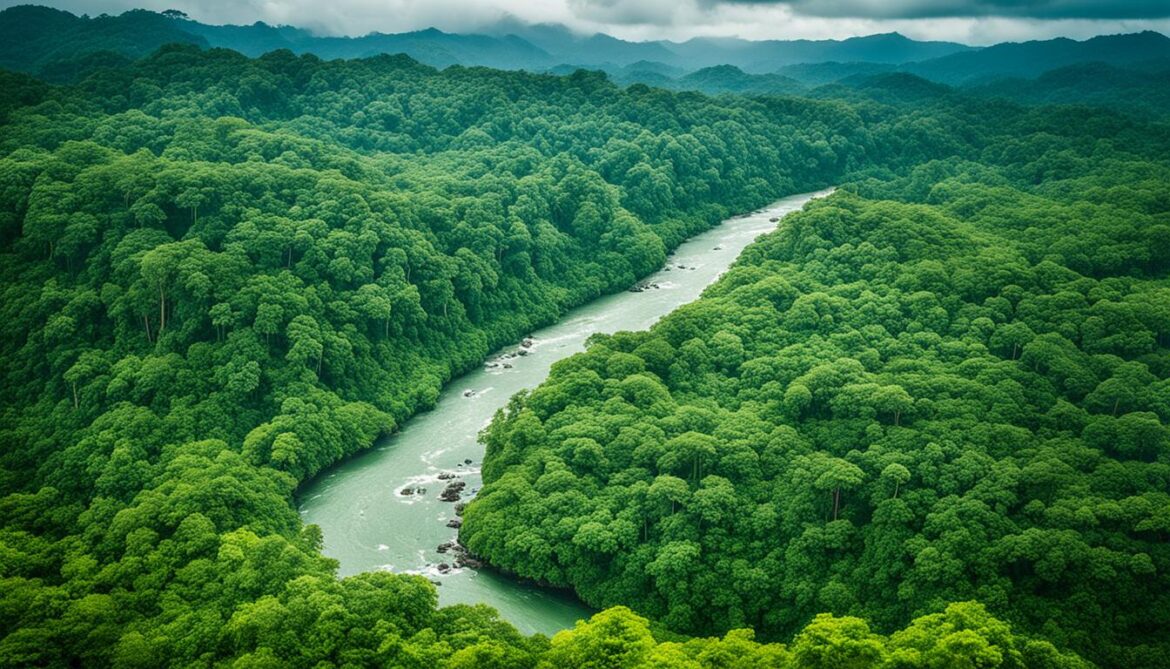
Challenges to Panama’s Biodiversity
Panama’s diverse ecosystems and precious biodiversity face numerous threats that pose significant challenges to their long-term survival. These threats include:
- Habitat loss: The destruction of natural habitats through deforestation and land conversion disrupts ecosystems and displaces native flora and fauna. This loss of habitat reduces the available resources and protection for various species, pushing them closer to extinction.
- Climate change: The impacts of climate change, such as rising temperatures, altered rainfall patterns, and changing sea levels, significantly affect species distribution and behavior. Many species struggle to adapt to these rapid environmental changes, leading to population declines and potential extinctions.
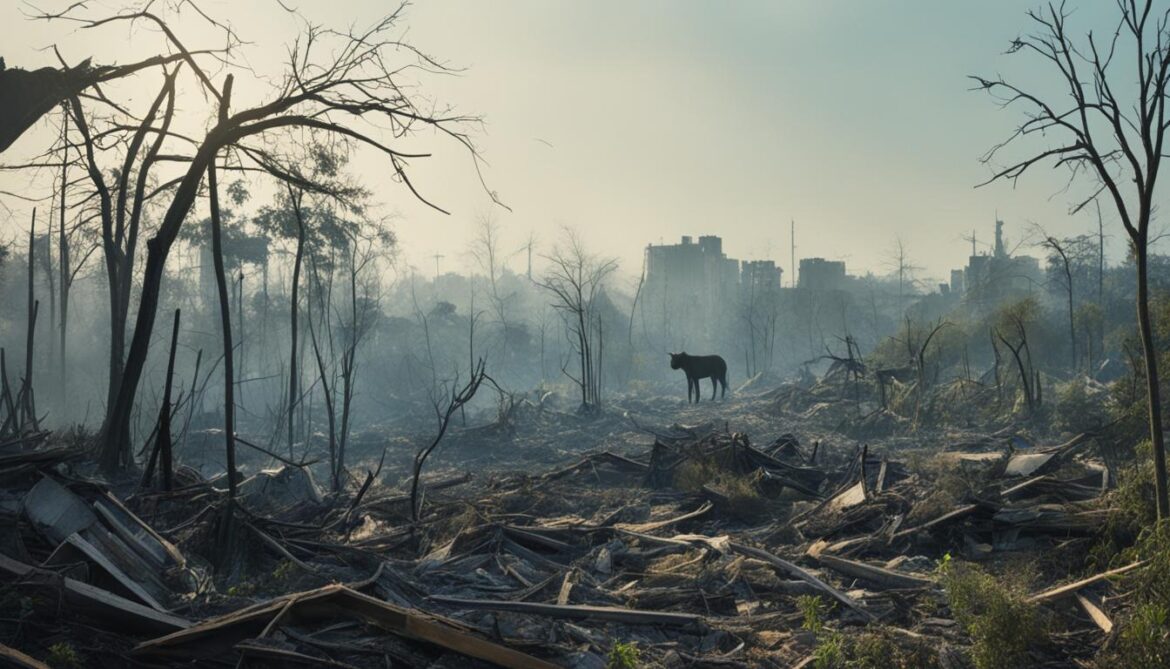
“Habitat loss disrupts ecosystems and displaces native fauna.”
- Illegal wildlife trade: The illegal trade of wildlife puts immense pressure on vulnerable species. Poaching and trafficking threaten iconic animals like jaguars, sea turtles, and exotic birds, leading to a decline in their populations. This illicit trade not only disrupts ecosystems but also undermines conservation efforts.
- Invasive species: The introduction of non-native species into Panama’s ecosystems can have devastating effects. Invasive species compete with native species for resources and disrupt the delicate balance of the ecosystem. They can outcompete native species, leading to their decline and subsequent biodiversity loss.
Panama recognizes these significant threats to its biodiversity and is actively taking measures to combat them. Efforts include:
- Implementing conservation measures to protect and restore habitats
- Conducting research to understand the impacts of these threats on species and ecosystems
- Enforcing laws and increasing penalties to deter illegal wildlife trade
By raising awareness and promoting sustainable practices, Panama aims to safeguard its diverse ecosystems and protect endangered species.
The Panama Canal’s Impact on Biodiversity
The Panama Canal, located in one of the world’s most biologically diverse areas, serves as a major shipping corridor. It plays a crucial role in connecting the Atlantic and Pacific Oceans, facilitating global trade and commerce. However, the canal’s impact on biodiversity cannot be overlooked.
The watershed and surrounding forests of the Panama Canal are essential for maintaining the ecosystem integrity of the canal and supporting diverse plant and animal communities. They act as a natural buffer, filtering and regulating water flow, and providing valuable habitat for a wide variety of species. The forest communities within the canal’s watershed contribute to the overall ecological balance, supporting the interconnected web of life in the region.
Clearing the forest in the canal’s watershed poses a significant threat to the water supply and the biodiversity of the area. It disrupts the delicate hydrological functioning and compromises the integrity of the ecosystem. The loss of forest cover can lead to soil erosion, water pollution, and the decline of numerous plant and animal species that depend on the forest habitat for survival. It’s crucial to recognize the importance of these forest communities and take necessary measures to protect them.
Efforts are being made to monitor and protect the forests within the canal’s watershed to minimize the impact on biodiversity. Conservation initiatives have been implemented to ensure hydrological functioning, maintain water quality, and safeguard the habitats that support a diverse range of flora and fauna. Balancing urban and economic development with conservation goals is a key priority to preserve the ecological integrity of the region.
By recognizing the significance of the Panama Canal’s impact on biodiversity and implementing conservation measures, we can strive to protect the invaluable forest communities and uphold the delicate balance of the ecosystem. The preservation of these natural resources is not only crucial for the sustainability of the canal but also for the long-term well-being of our planet.
Forests in the Panama Canal Watershed
In the Panama Canal watershed, approximately 54% of the land area is forested, while 43% is used for pasture or shrubland. The forests in this region are primarily found in two large blocks, contributing to the forest coverage of Panama. These forests are of great importance as they provide habitat for a diverse range of plant and animal species.
- The majority of the protected areas in Panama, such as national parks and nature monuments, are located within the watershed.
- These protected areas play a crucial role in conserving the forest ecosystems and promoting the preservation of biodiversity.
- The composition of forests in the Panama Canal watershed varies, with each forest having its dominant tree species.
- This variation in forest composition contributes to the overall high tree species diversity in Panama.
Efforts are being made to protect and preserve these forests, ensuring their long-term sustainability. By designating national parks and other protected areas, Panama aims to safeguard the unique biodiversity and forest resources found within the Panama Canal watershed.
| Forest Coverage in the Panama Canal Watershed | Land Use in the Panama Canal Watershed |
|---|---|
| Approximately 54% of the land area is forested. | 43% of the land is used for pasture or shrubland. |
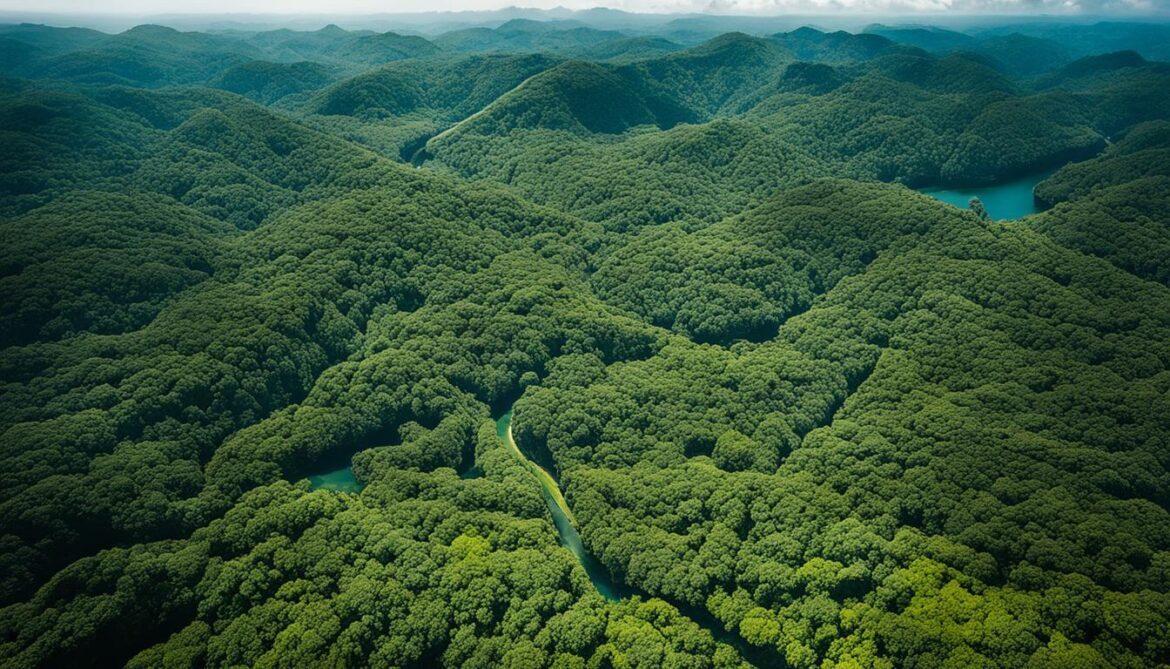
Tree Species Diversity in the Canal Area
The tree communities in the Panama Canal area display a remarkable variety in species composition, contributing to the rich biodiversity found in Panama. The presence of different tree species in these communities leads to a high turnover of species between forests, resulting in what is known as high beta diversity. This turnover enhances the overall biodiversity of the region, highlighting the uniqueness and ecological significance of Panama’s forests.
Within the canal area, various forest types can be identified, ranging from moist forests to wet forests. Each forest type harbors its own distinct set of tree species, further enriching the diversity found within the region. These diverse forests provide critical habitat for a wide array of plants and animals, supporting the overall ecosystem equilibrium. The presence of such diverse forest types showcases the ecological integrity and resilience of Panama’s natural landscapes.
To give you a better understanding of the tree species composition in the canal area, let’s take a closer look at the different forest types and their notable characteristics:
| Forest Type | Notable Characteristics |
|---|---|
| Moist Forests | These forests are characterized by their high humidity and abundant rainfall, creating a perfect environment for a wide range of tree species. The tree canopy in moist forests is dense, providing ample shade for understory plants. |
| Cloud Forests | Cloud forests are found at higher elevations, where moist air interacts with cooler temperatures, creating a unique microclimate. These forests are shrouded in mist and host a rich diversity of epiphytes, such as orchids and ferns, that thrive in the atmospheric conditions. |
| Wet Forests | Wet forests, as the name suggests, experience high levels of precipitation throughout the year. The soil in these forests is often waterlogged, creating ideal conditions for certain tree species to thrive, including aquatic or semi-aquatic plants. |
This table provides a glimpse into the diverse forest types present in the Panama Canal area, offering a snapshot of their notable characteristics. The environment created by these forests supports an extensive range of tree species, contributing to the overall biodiversity and ecological importance of the region.
Relevant quotes:
“The high turnover of tree species between forests in the Panama Canal area adds to the exceptional biodiversity of the region.” – Dr. Maria Lopez, Panama Biodiversity Research Centre
“The diverse forest types in the canal area, from moist forests to wet forests, provide essential habitat for countless species, making Panama a hotspot for tree species diversity.” – Prof. David Smith, Tree Conservation Association
Conservation Challenges and Future Outlook
The Panama Canal area faces numerous challenges when it comes to conserving its biodiversity and ensuring sustainable development. These challenges include:
- Maintaining forest coverage amidst urban development
- Ensuring hydrological functioning
- Promoting sustainable development
Efforts are underway to address these challenges and protect the biodiversity of the region. Monitoring is a crucial aspect of biodiversity conservation, allowing us to assess the conservation status and identify potential threats. Biodiversity monitoring involves collecting data on species diversity, distribution, and population trends.
Urban development poses a threat to the natural habitats in the Panama Canal area. As cities expand, there is an increased risk of habitat loss and fragmentation. It is essential to strike a balance between urban development and biodiversity conservation through sustainable practices and land-use planning.
Another critical aspect of conservation in the Panama Canal area is maintaining hydrological functioning. Forests play a vital role in regulating water flow, maintaining water quality, and preventing soil erosion. Protecting the forests and watersheds ensures the ecosystem’s hydrological services are preserved.
Sustainable development practices integrate environmental, social, and economic factors to promote long-term well-being. The future outlook for conservation in the Panama Canal area relies on continued monitoring, research, and collaboration between stakeholders to develop effective strategies for sustainable development while preserving the region’s unique biodiversity and hydrological functioning.
Biodiversity Monitoring in the Panama Canal Area
| Biodiversity Monitoring Methods | Importance |
|---|---|
| Species inventories | To assess species richness and diversity |
| Habitat surveys | To identify and monitor specific habitats and their conditions |
| Camera trapping | To study elusive and nocturnal species |
| Acoustic monitoring | To detect and study vocalizations of species such as birds, frogs, and mammals |
| Remote sensing | To monitor changes in land cover and assess habitat loss |
Note: The above table provides examples of biodiversity monitoring methods used in the Panama Canal area. It is not an exhaustive list.
Community Engagement and Sustainable Practices
Community engagement and the adoption of sustainable practices are central to the conservation of biodiversity in Panama. Environmental education programs are implemented in schools and local communities to raise awareness about the importance of biodiversity and promote sustainable practices. By instilling a sense of stewardship and responsibility for the natural resources and ecosystems, Panama aims to create a society that actively participates in and values biodiversity conservation.
Through environmental education initiatives, individuals gain an understanding of the interconnectedness between human activities and the environment. They learn about the impact of unsustainable practices such as deforestation, pollution, and overexploitation of natural resources on biodiversity and ecosystem stability. This knowledge empowers them to make informed decisions and adopt sustainable practices in their daily lives.
Local communities play a crucial role in biodiversity conservation efforts. By involving them in conservation projects, their traditional knowledge and expertise can contribute to effective resource management and preservation of habitats. Furthermore, engagement with local communities fosters a sense of ownership and responsibility for biodiversity conservation. By recognizing the value of their natural surroundings, communities are more likely to actively participate in sustainable practices and advocate for the protection of local ecosystems.
By promoting environmental education and engaging with local communities, Panama aims to create a future where sustainable practices are embraced, and biodiversity conservation becomes a priority for all. Through collective efforts, we can ensure the long-term preservation of ecosystems, the protection of endangered species, and the sustainable use of natural resources.




